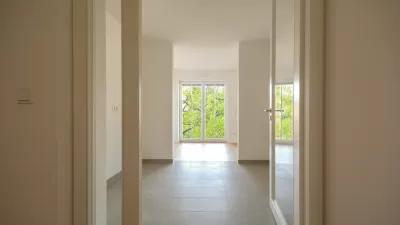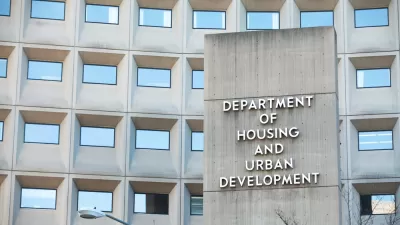Pro-development advocates have a new study to back up their cause.

Laura Kusisto shares news of a recent addition to the body of research that makes the case against land use regulation. First, the context for the article:
In this year’s election, candidates have focused blame for rising income inequality on broad economic forces, from globalization to the decline of the American manufacturing base. But a growing body of research suggests a more ordinary factor: the price of the average single-family home for sale, from Fairfield, Conn., to Portland, Ore.
Prior to detailing the new research, Kusisto employs an anecdote from the city of San Francisco, where developer Patrick Kennedy is attempting to get approval for an apartment complex near the city's financial district. A rule that would limit the number of units—both market rate and affordable, has Kennedy willing to turn a memorable phrase: "There are a lot of ways you can have modern-day Jim Crow through zoning," he says.
Kusisto's main purpose is to introduce research by Daniel Shoag, an associate professor of public policy at Harvard University, and Peter Ganong, a postdoctoral fellow at the National Bureau of Economic Research, into the discussion about housing supply and land use regulation. The research "looked at mentions of 'land-use' in appeals-court cases and found the number of references began rising sharply around 1970, with some states seeing a much larger increase than others." This, explains Kusisto by way of explaining the study, "while such efforts are well intentioned, they are having an unintended side effect: increasing social stratification between wealthier and poorer areas."
The article includes evidence from the study of high-regulation, wealthier states stagnating, while low-regulation states have continued to speed ahead.
[The article might be behind a paywall for some readers.]
FULL STORY: As Land-Use Rules Rise, Economic Mobility Slows, Research Says

Planetizen Federal Action Tracker
A weekly monitor of how Trump’s orders and actions are impacting planners and planning in America.

San Francisco's School District Spent $105M To Build Affordable Housing for Teachers — And That's Just the Beginning
SFUSD joins a growing list of school districts using their land holdings to address housing affordability challenges faced by their own employees.

The Tiny, Adorable $7,000 Car Turning Japan Onto EVs
The single seat Mibot charges from a regular plug as quickly as an iPad, and is about half the price of an average EV.

Seattle's Plan for Adopting Driverless Cars
Equity, safety, accessibility and affordability are front of mind as the city prepares for robotaxis and other autonomous vehicles.

As Trump Phases Out FEMA, Is It Time to Flee the Floodplains?
With less federal funding available for disaster relief efforts, the need to relocate at-risk communities is more urgent than ever.

With Protected Lanes, 460% More People Commute by Bike
For those needing more ammo, more data proving what we already knew is here.
Urban Design for Planners 1: Software Tools
This six-course series explores essential urban design concepts using open source software and equips planners with the tools they need to participate fully in the urban design process.
Planning for Universal Design
Learn the tools for implementing Universal Design in planning regulations.
Smith Gee Studio
City of Charlotte
City of Camden Redevelopment Agency
City of Astoria
Transportation Research & Education Center (TREC) at Portland State University
US High Speed Rail Association
City of Camden Redevelopment Agency
Municipality of Princeton (NJ)





























